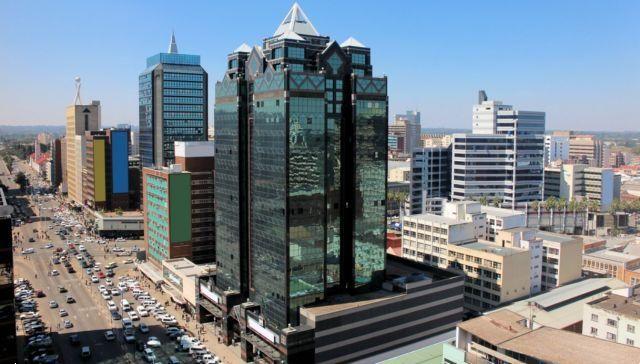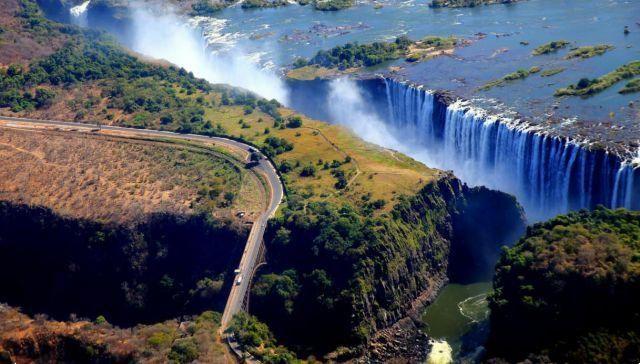 What to do and what to see in the capital of Zimbabwe, Harare, a large city in the heart of south-eastern Africa.
What to do and what to see in the capital of Zimbabwe, Harare, a large city in the heart of south-eastern Africa.
Harare is there capital of Zimbabwe, a large city with over two million inhabitants which has played the role of the political, economic and cultural heart of the country since the end of the nineteenth century. The territory where Harare is located, in south-eastern Africa, is located at almost 1.500 meters above sea level on a large plateau called the Zimbabwe plateau which extends from the Zambezi river in the north to the Lesotho massif.
Harare was born as the progressive development of a fortification, Fort Salisbury, built by the men of the powerful Sir Cecil Rhodes, the British explorer who founded a sort of private nation, the Rhodesia, linked to the Empire of Queen Victoria. This area, in fact, was uninhabited and the most important cities of the populations that had always inhabited Zimbabwe were located on the edge of the plateau. The birth of Harare therefore dates back to the end of the nineteenth century and coincides with the loss of independence of Zimbabwe, which it regained only at the end of the seventies and Mugabe's seizure of power.
Mugabe's rule lasted until the autumn of 2017 when a gentle coup deposed him. For this reason the political situation the current situation is very nebulous and it is not clear what the country's future will be. Anyone wishing to leave for a trip to Harare and Zimbabwe must keep in mind this rapidly changing context and the best choice is to inquire carefully at the diplomatic offices to get a complete overview of the situation.
Beyond this particular situation it must be kept in mind that the capital of Zimbabwe is a city where tourists must pay attention due to the presence of petty crime and the best choice in this sense is to participate in organized trips and always stay in a group. In this guide we will discover the most interesting destinations and attractions not to be missed on an evocative trip to Harare, the fascinating capital of Zimbabwe.
The center of Harare expands over a very large area and for this reason the fastest way to move is to rent a car or take a taxi, although traffic can be very intense during rush hour. There are also buses and minibuses that allow you to travel more cheaply but the excessive crowding and the presence of pickpockets make it a rather risky choice.
The main attraction that you can visit in the center of the capital is the National Gallery of Zimbabwe, the main art museum of the State, where a vast collection of contemporary works of art and many examples of traditional art from all regions of Zimbabwe are preserved. The Gallery participates every year in the most important international art events and is often the venue for very important temporary exhibitions dedicated to the most recent results of the African artistic and photographic scene.
Remaining in the cultural sphere, you cannot miss a visit to the other two most important institutions in Harare, the National Archives and the Zimbabwe Museum of Human Sciences.
I National Archives they are the place where all the most important documents of the State of Zimbabwe are collected and preserved and even those who are not professional historians will find inside the possibility of discovering the history of the country from the times of the Monomotapa empire up to the most recent history . An in-depth study of particular relevance is dedicated to the arrival of the first European explorers, first Portuguese and later English; the letters and reports they prepared to describe the natural wonders of this land are still preserved.
This is Zimbabwe Museum of Human Sciences it is the most suitable place to discover the most ancient history of Zimbabwe, thanks to a very rich archaeological collection and the presence of reconstructions that allow us to retrace the first centuries of human presence in these territories, in particular referring to the history of Great Zimbabwe, the capital of the ancient empire. One of the most evocative finds in the museum is the Ngoma lungundu, considered by some to be the Ark of the Covenant mentioned in the Old Testament.
After these cultural attractions you can move away from the heart of the historic center to reach the Kopje, a large one granite hill which rises above the tallest buildings in the city and allows you to admire a spectacular panorama over the entire urban area. Furthermore, a short distance from the top of the hill it is possible to visit the neighborhood of the same name which still retains many buildings from the early twentieth century and allows you to see firsthand how the face of the city has changed in just over 120 years.
For a suggestive visit in the open air you can first take a walk in the suggestive botanical garden of Harare, which houses some of the most characteristic plants of the region and an incredible variety of flowers, and then reach the Eagle Sculpture Park. This very particular park is a true open-air art gallery which brings together the best of the statuary production of the artists of Zimbabwe and all of southern Africa, hosting the Chapungu Sculpture Centre, a very prestigious art academy which every year organizes a important artistic festival.
However, if you want to explore the wild nature of Zimbabwe without straying too far from the city center you can take part in an organized visit to In the Woodlands, a spectacular area where the ancient highland forest has been preserved and in this way you can come into contact with African nature. Giraffes, antelopes, zebras, wildebeests, crocodiles and cheetahs inhabit this large protected area undisturbed where they can be observed by visitors without danger or disturbance to their well-being.





